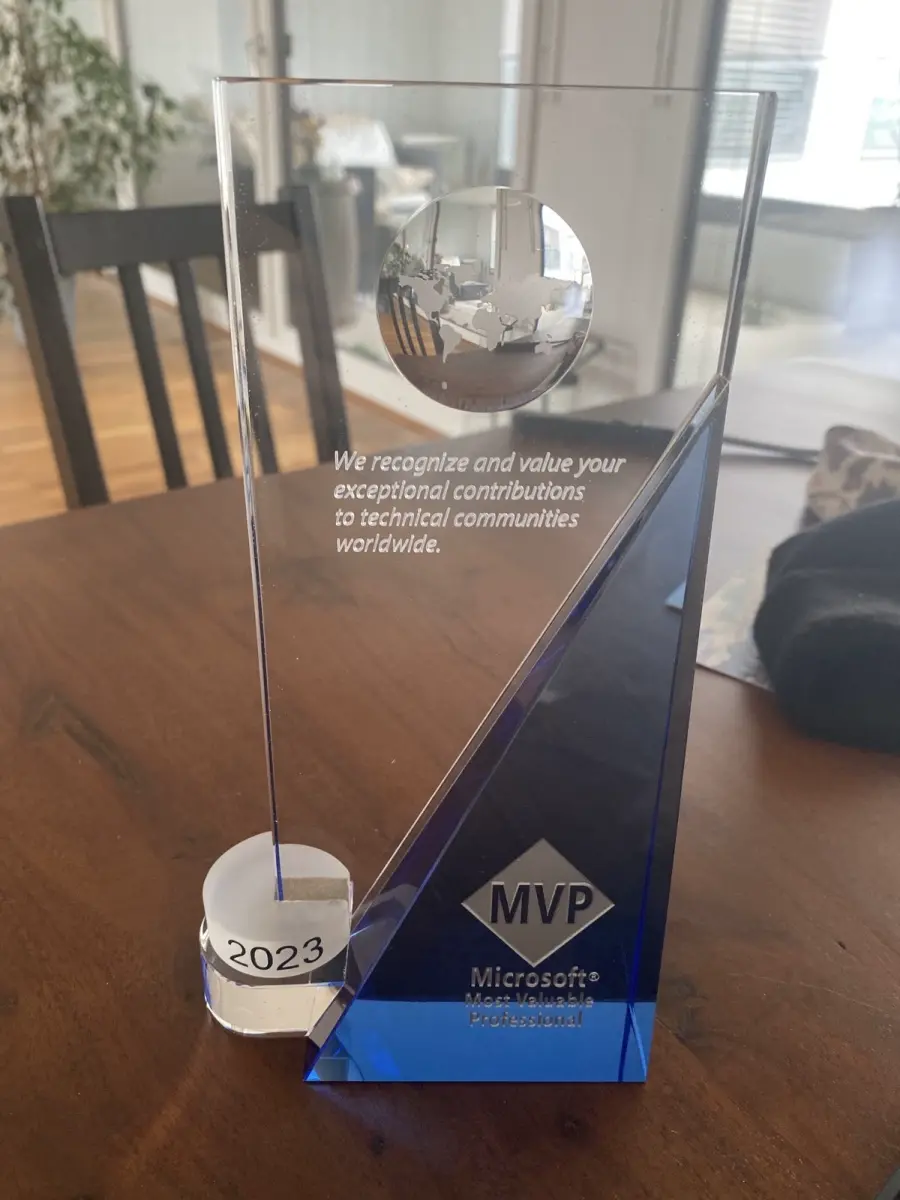In this article, I will talk about my journey to becoming a Microsoft MVP. I will talk about the process, the requirements, and the benefits of becoming a Microsoft MVP. Of course, this is my personal experience and journey, so mileage may vary.
What is an MVP?
Microsoft MVP stands for Most Valuable Professional. It is a program that Microsoft runs to recognize and reward community members who are active in the community. The MVP program is a global program, and there are MVPs in many different countries and categories. What do I mean by active? There are many things you can do, for example:
- Blogging
- Contribute to open source projects including Microsoft open source projects
- Hosting or helping organize user groups
- Hosting or helping organize conferences
- Speaking at conferences or user groups
- Mentoring others
- Helping others on forums
- Contributing to Microsoft documentation
- Creating content on LinkedIn/Twitter/YouTube/...
- ... and many more
To keep it simple: You are a thought leader. You are an expert, and you are helping grow the community. Of course, there is a big win for Microsoft here: You are generating awareness for Microsoft products and services. A very important thing is: to be consistent. I know others said it before and I am only repeating it: Consistency is key. I can not stress this enough.
Many things I listed above are applicable to me. I am blogging, create and maintain open source software and talk at conferences and user groups. I also created smaller eBooks that may or may not count - I am not sure, to be honest, but I entered it in the form 😄.
I would argue (take it with a grain of salt) it also helps a lot if you are pushing new technologies that Microsoft is using. In my caseI guess, it was Blazor where I am quite active. Maybe .NET MAUI is the next hot thing, so being an expert and advocate for that, might help here a lot. Again, I am not in the committee, so I can only assume certain things that seem logical to me.
The process
Directly connecting to the last point I said is how the process works. First, you have to get nominated. This is either a current MVP or a Microsoft FTE (Full Time Employee). Once you're nominated, you have to list all of your contributions of the last year - and once you are an MVP, you have to do this on a yearly basis. For example, you can go to my MVP webpage to see what I did. I basically keep track in my Notion of my contributions so I don't have to spend an awful lot of time the next year (it really takes hours depending on the number of contributions you have).
Back to topic: The process. Once you fill out the form, you have to wait. The MVP committee will review your nomination and decide whether you are an MVP.
The benefits
There are some well-known benefits of being an MVP. For me, the most important thing with a long distance to the second place is the network. Sure, there are several benefits, like technical subscriptions (like this blog runs for free on Azure thanks to the credits) and the beautiful MVP trophy you can see below, but nothing beats the network! I met so many amazing people thanks to that program and the way towards it. You also have the chance to speak with product teams to get involved in your favorite stack. There is an annual MVP summit where you can meet other MVPs and Microsoft employees. Also, the MVP badge helps you get more attention for things like conference talks.
Certainly it will boost your career - but also that is only half true. Everything you did to become a MVP would have helped you anway, with or without that award. Anyway, for sure it creates new opportunities and helps you grow as a person.

## Conclusion Becoming a Microsoft MVP is a long journey. It takes a lot of time and effort. But it is worth it. I am very happy to be part of the MVP program and I am looking forward to the next years. Be a leader, be an expert, and help grow the community.


